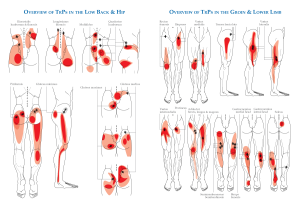What kind of doctor treats a pinched nerve?

Spine decompression is a specialized surgery aimed at helping people resolve chronic nerve and back pain. There are many reasons someone may require spinal decompression, but it is usually only performed when simpler, non-invasive treatments like medications and physical therapy haven’t worked well.
How Does Spine Decompression Work?
Spinal decompression surgery is designed to relieve nerve pain by reducing pressure on the spinal nerves. It’s an effective treatment for specific back conditions such as cervical or lumbar radiculopathy.
Radiculopathy is a medical term for what is commonly known as a pinched nerve. Pinched nerves can cause radiating pain, or pain that travels from its place of origin. For example, a pinched nerve in the neck can cause radiating pain from the neck to the hand. Another situation is if the sacral nerve is pinched, causing sciatica, pain will often radiate from the lower back down the leg.
Do I Need Spinal Decompression?
Before considering spine decompression surgery, you will likely explore more simple treatments for relief. Non-invasive options are often the first line of defense against nerve pain and include a variety of treatments aimed at reducing pain and improving function without surgery. Some of these options are:
Physical Therapy: Tailored exercises and stretches are designed to relieve pressure on the nerve, improve mobility, and strengthen muscles supporting the spine.
Medications: Over-the-counter pain relievers, such as ibuprofen or acetaminophen, can be used for pain management. In some cases, prescription medications like muscle relaxants, anti-inflammatories, or nerve pain medications might be recommended.
Steroid Injections: Injecting steroids can help reduce inflammation and limit the pain caused by nerve compression.
Spinal decompression surgery may be considered if these treatments fail to help or if the severity requires a different approach.
Spine Decompression Procedures
Three main procedures are used in spinal decompression surgery, each performed to correct different conditions causing back and neck pain.
Laminectomy
This procedure is the removal of part of the lamina, which is part of the vertebral bone. The lamina forms a cover over the back of the spinal canal. In a laminectomy, the surgeon removes this section to create more space in the spinal canal and lessen the pressure on the affected nerve. This procedure is often recommended when a narrowing of the spinal canal (spinal stenosis) causes significant pressure on the spinal cord or nerves, leading to pain, numbness, or weakness.
Discectomy
This procedure is used when an intervertebral disc is causing the problem. It may be herniated or bulged out, pressing on a nerve. The surgeon removes the damaged part of the disc to alleviate the pain, tingling, or muscle weakness it was causing.
Spinal Fusion
Spinal fusion is done by fusing two or more vertebrae together. The surgeon places a bone graft between the affected vertebrae. Over time, these vertebrae heal and join together into a single, solid bone. This fusion restricts the movement between the vertebrae, reducing pain and making the spine more stable.
Is Spinal Decompression Right for You?
If you’re experiencing persistent back pain or numbness, it could be time to consider spinal decompression options. Reach out to consult with one of our specialists to discuss your symptoms and explore potential treatment paths. Our doctors can provide a precise diagnosis and recommend the best procedure for you.
Don’t continue living with chronic back pain — today!




